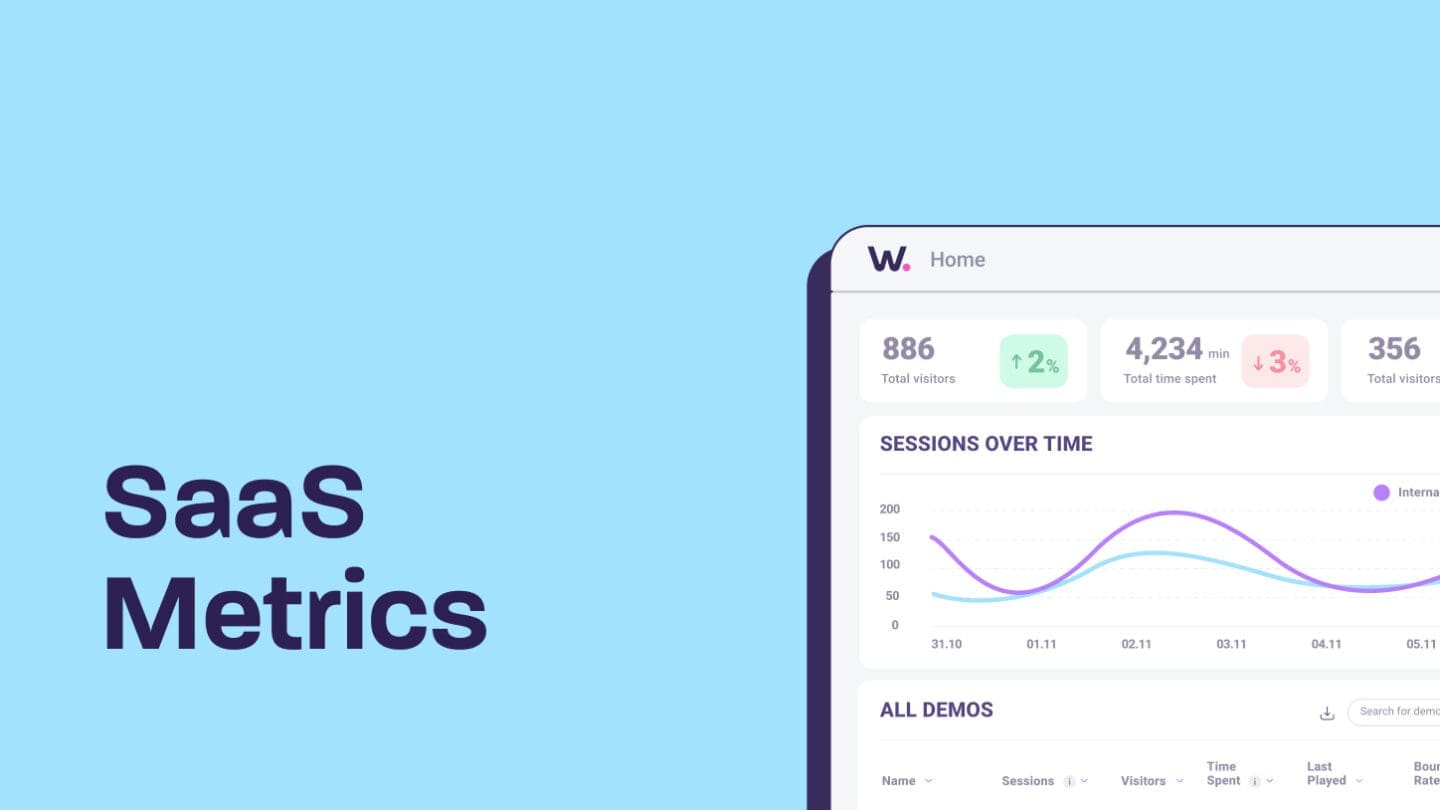If you build it, they will come.
(Ok, we may have gotten a little too philosophical here.)
Take two: When it comes to B2B lead nurturing, if you successfully execute a lead nurturing campaign, they will come.
While this version might not be as catchy as the first one, it’s the truth.
That’s because effective lead nurturing strategies revolve around building relationships over time, providing value, and guiding potential customers down the sales funnel.
Having said that, the right lead nurturing strategy isn’t just about boosting conversions. But rather, it’s about fostering loyalty and retention for the long-term.
With this in mind, join us as we break down everything you need to know about building a lead nurturing strategy.
- Create a lead management process
- Align marketing and sales
- Use lead intelligence data
- Identify and segment your leads
- Create a content marketing program
- Personalized email marketing
- Define key performance indicators
- Incorporate interactive product demos
- Using interactive demos to enhance your lead generation strategy
Convert more leads with Walnut >
Create a lead management process
Proper lead management is the foundation of a successful lead nurturing strategy.
After all, you need to know where your leads are coming from to cater to them properly.
Different touch points such as website sign-ups, social media interactions, event registrations, and direct inquiries call for different types of engagement.
There’s also the matter of systematically classifying your leads based on the source. Many variables come into play here, as classifications can range from prospects’ interests or needs, where they are in the funnel, or even their engagement level.
In addition, a distinct follow-up strategy should be created for each lead. For example, let’s say Taylor Swift signed up for your newsletter.
(Ok, even just the thought of that is making us fangirl!)
That clearly implies that she is looking for more information, so it would be best to serve her with educational content.
Meanwhile, Travis Kelce requested a product demo. That indicates Travis’s level of interest is higher than Taylor’s, so it would be best to approach Travis with a more direct sales approach.
This is where a lead management process can come in to further streamline the process of B2B lead nurturing and funnel management.
Align marketing and sales
It goes without saying that when it comes to lead generation and lead nurturing campaigns, there is no room for silos.
Sales and marketing teams need to be perfectly aligned for seamless execution—and this is best established when both teams have a shared vision, and shared understanding of customers’ journey through the funnel.
Both teams need to work to support one another. It is the responsibility of the marketing team to attract and nurture leads earlier on in the sales funnel through various forms of messaging, such as targeted content, social media engagement, and email campaigns. They also could embed interactive demos on the website homepage, landing pages, or blog.
From there, marketing needs to hand off gathered insights and data to the sales team, and they will take the lead nurturing campaign to the next step.
Clear communication channels are crucial here to avoid friction (and drama) between the teams, and to achieve greater efficiency to maximize the chances of conversion.
Use lead intelligence data
Lead intelligence data is worth its weight in gold.
(Ok, maybe not literally, but you know what we mean.)
It really is the key to effectively tailoring your lead nurturing and demand generation strategies.
It’s best to gather this data from as many touch points as possible. Seriously, the more the merrier. So don’t be shy to use surveys to gather insights on customer needs and preferences. Even customer support interactions can help you get an idea of common questions or concerns that can help tweak elements of your lead nurturing campaign.
And don’t forget the value of data from converted customers, because that too can help further refine your approach to lead generation.
This is all the more reason why the use of tools to help manage this data and analytics is beneficial, because it provides a comprehensive view of your leads and their behaviors.
Once armed with these insights, you can use the intelligence to personalize your communications, offerings, and demos. Collectively, this will go a long way in increasing the likelihood of conversion, as well as customer satisfaction.
Identify and segment your leads
When it comes to B2B lead nurturing, correctly identifying and segmenting your leads plays a huge role in impacting the success of your lead nurturing campaigns.
This calls for categorizing your leads based on many forms of criteria, such as workplace and geographical location. With these insights, you can further tailor your lead nurturing strategies to address the specific needs and pain points of each respective segment accordingly.
Because let’s face it, one size does not fit all. A lead from one company would have entirely different needs compared to a lead from another company. The nuances also differ between the position of the leads within their organization. You would want to approach the influencers within the company differently from how you would approach the decision-maker. This way you can further win them over by ensuring your communications appeal to their unique needs.
Once you’re able to identify where each lead stands in the buying process, you can deliver the right content at the right time.
Create a content marketing program
We meant it when we said sales and marketing need to work together.
If sales teams can collaborate with marketing to build a content marketing program, it would be much easier to offer relevant and valuable content that resonates with each lead segment.
On top of this, the content you offer needs to be personalized based on where the lead is in the sales process.
For example, top of the funnel leads would find educational blog posts and infographics interesting to peruse through. Meanwhile, the leads that are further down the funnel usually want more heavy-duty content such as whitepapers, case studies, and webinars.
Once you have a solid flow of content that is tailored for each part of the sales funnel, it needs to be promoted (and cross-promoted) to maximize reach. Use different platforms that allow you to connect with audiences, and keep serving up a steady stream of valuable insights to your prospects.
Personalized email marketing
Personalized email marketing is a far cry from blasting out a single email to everyone on your email lists.
Instead, it’s a strategic approach that significantly boosts engagement and conversion rates. It can only be done right when you use detailed lead intelligence to tailor messages that resonate on an individual level.
And no, we’re not talking about simply placing their first name in the email. We’re talking about messaging that addresses their specific interests, challenges, and position in the sales funnel.
This is easier said than done. But just like when you create your content plan, you need to understand where your leads are in the funnel.
For instance, leads at the top of the funnel would be more likely to respond to emails about industry trends and introductory guides. Meanwhile, leads that are further down the funnel would respond to the likes of case studies, product comparisons, and personalized demos.
That being said, email marketing content consistently needs refining, especially if you further implement segmentation based on elements such as lead behavior, purchase history, and engagement with previous emails.
We know it’s a little tedious at first, but trust us when we say it’s worth it because the emails guide your leads through each stage with targeted messaging designed to address their evolving needs.
Define key performance indicators
How will you know if your lead generation strategy is successful if you don’t have any way to track it?
That’s why it’s essential to define key performance indicators (KPIs) to better measure the success of your B2B lead nurturing, lead generation, and demand generation efforts.
Through the use of tangible metrics, you can evaluate the effectiveness of your strategies and make informed decisions for optimization.
To avoid going crazy with KPI overload, we recommend only selecting the KPIs that align with your very specific objectives at any given time. After all, it won’t always be about conversion rates. You would also want to look into ways to improve the quality of your leads, or new ways to shorten the sales process.
Some of the more evergreen KPI’s to keep an eye on besides conversion rate include click-through rates and engagement metrics. These provide a glimpse into the effectiveness of your digital marketing efforts, and provide further understanding into areas that need improvement.
Incorporate interactive product demos
When it comes to building a lead nurturing strategy, no tool is more powerful than interactive product demos.
Why? Well, put yourself in your buyers’ shoes. Clicking through an interactive demo is a much more engaging and meaningful experience than just looking at static content.
But beyond being more engaging, by using interactive demos as part of your top of funnel strategy, you’ll be able to see which areas of your product buyers spent the most time on and which parts they skipped through. This information can then be used to better understand what to focus on during future conversations with your prospects.
Not to mention, because prospects have been exposed to your product earlier on in the sales cycle, they’ll already have a sense of what your product does before they actually meet with your sales team. And this will help you make sure your sales team is focusing their efforts on high-intent prospects.
Using interactive demos to enhance your lead generation strategy
At the end of the day, the most successful lead nurturing strategy requires you to have a comprehensive approach that encompasses managing and converting leads, aligning marketing and sales teams, utilizing lead intelligence data, and segmenting your audience for personalized engagement.
That’s why there’s no time like the present to collaborate with your marketing team to develop a content marketing program and personalized email marketing campaigns to move leads through the sales funnel.
Most importantly, this should include embedding an interactive demo on your website or including it in your outreach to not only give prospects access to your product earlier in the sales process, but also ensure that the leads you’re generating have high buying intent.
And of course, it’s essential to define and monitor your KPI’s, so you can tweak your messaging and approaches along the way.
With these practices in place, you’ll be well on your way to getting the most out of your lead nurturing efforts.
Ready to skyrocket your lead generation strategy? All you have to do is click the ‘Get started’ button.



